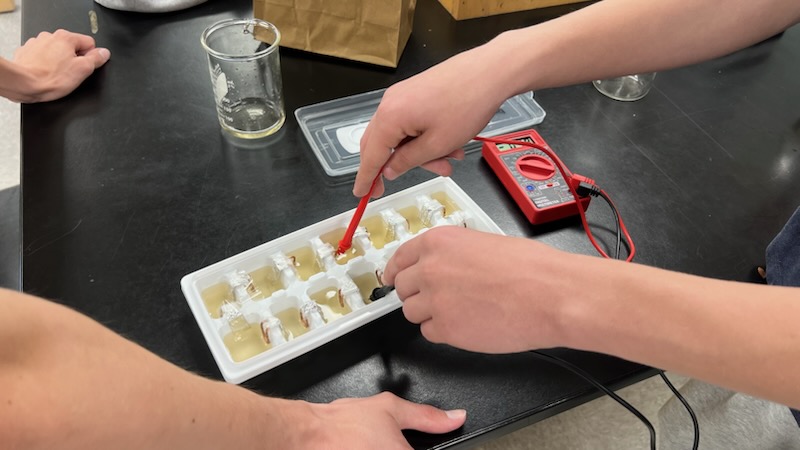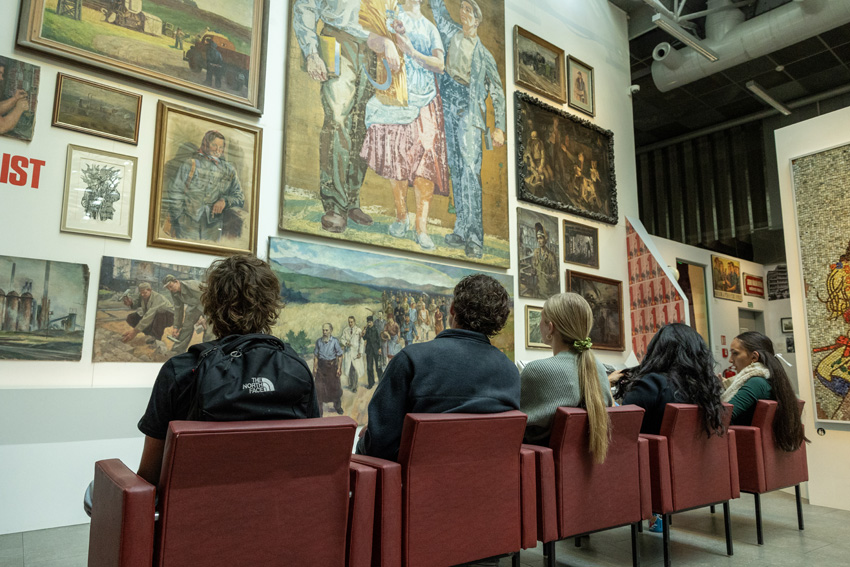Junior Ivette Ibarra chose to interview Japanese internment survivor Nancy Suda along with her partner Ashley Garcia, as part of her oral presentation after reading Jeanne Wakatsuki’s novel, Farewell to Manzanar. The following is part of Ibarra’s and Garcia’s research and presentation of the Japanese internment after the bombing of Pearl Harbor. They relate Wakatsuki’s Manzanar experience to that of Suda’s.
On Dec. 7, 1941 the United States Naval Base, Pearl Harbor in Hawaii, was attacked by Japanese planes, and killed more then 2,300 US Americans. The West Coast was in a state of paranoia. The government feared that the Japanese Americans would send in materials and information about the states.
Soon after the beginning of World War II (WWII), on Feb. 19, 1942, Franklin D. Roosevelt signed Executive Order 9066. The evacuation order commenced the round-up of 120,000 American Japanese people to relocation centers, that were located in California, Idaho, Utah, Arizona, Wyoming, Colorado and Arkansas.
Nancy Suda, 13 at the time, was a former internee of the Jerome Relocation Center, in Arkansas. She lived on a 40-acre farm near Hanford, CA, with her parents and four siblings before the incident. Suda was the middle child of five with three sisters and one younger brother. Her family worked everyday out on the farm, and she held great admiration for her father’s work ethic.
“My father was always busy working on the farm,” Suda said. “When my father graduated high school, he had saved up enough money to go to Hawaii. There he worked on the sugar cane fields for awhile. He later was able to raise enough money to come to California, and he settled in San Franscico. When the big San Francisco fire happened he later moved to Stockton. My father taught himself how to read and write in English by a couple of books. He always encouraged us to pursue education.”
To her great sadness, Suda’s mother passed away. The funeral was held on Dec. 7, 1941, the day that Pearl Harbor was attacked. As the dinner following the procession was held at Suda’s house, the occasion was misconstrued by some neighbors.
“My mother died the same year we went to camp,” Suda said. “I remember her funeral. The Japanese community in Hanford helped out with funeral plans. My father held a dinner at our house and invited all the people that helped us to come and eat, and it happened to be Dec., 7. Some of our neighbors believed that we were celebrating the attack on Pearl Harbor.”
The following day when Suda and her siblings went to school, at Hanford High, their peers were very hostile towards them.
“Everyone is your friend on Friday and when we went back to school on Monday we received the cold shoulder from a lot of people,” Suda said. “Some people were still friendly and spoke to us and knew it wasn’t our fault, but many were huddled in a corner and we could overhear them saying ‘Jap’.”
The next spring President Roosevelt gave the order to relocate all people of Japanese decent. When Suda’s family received the notice of the executive order 9066, there was a fear of the unknown that came to them. They did not know what was to become of them.
“Those executive order notice were hung everywhere,” Suda said. “Almost every telephone pole had a bunch of them, they were everywhere. It was shocking. We didn?t know how we were going to settle everything. The crops had just been planted, such as cotton, plums, alfalfa and Muscat grapes. So we didn’t know what was to come of the farm.?
About 120,000 Japanese were relocated to internment camps. At the camps, sometimes entire families lived in small, one room cells or barracks. The meal portions that were served were also very small. Several people died in these camps due to stress and lack of medical care.
“It was interesting,” Suda said. “In the eighth grade I gave a report of how great of a country America was to live in, and the following year the same country was send me to an internment camp. The barracks were small, and uncomfortable, and even worse was that I had a big family. Jerome was still being built. The bathrooms weren’t finished yet and due to the food, and water that were given people had a bad case of the runs, and we had to go all the way to the main washrooms.”
Internment camps were sometimes located in remote areas where weather conditions weren?t always favorable. The Japanese also had to use communal areas for washing, laundry and eating. They did not provide much privacy and were guarded by US military personnel, and a barb wire perimeter.
“The showers were very primitive,” Suda said. “There was no separation, just a lot of shower heads; no one had privacy or anything. The toilets were a long troff and a cardboard over it.”
Food in Japanese internment camps also added to the hardships of the Japanese. In internment camps, Japanese were fed three times a day. Meals were served in long mess halls, where bells would signal mealtimes. Food portions were small, food starchy and dull. Most meals consisted of potatoes and bread.
“In our camp we ate a lot of spam,” Suda said. “We never ate sweet meats or liver. But most people would just cook their own food in their barrack.”
The work and daily activities of Japanese Americans in the camps was attempted to copy the Japanese normal ways of life. They had school, medical care, camp newspapers and sometimes musical entertainment. Unfortunately, some internees died from inadequate medical care or the high level of emotional stress. But, their time spent in the internment camps was far from what the Japanese would have experienced in their own homes.
“School is mainly what my activities consisted of during my camp days,” Suda said. “The teachers were so friendly. There were a lot of activities going on daily. I was a sophomore, when I went to school there. There was a school newsletter, and many clubs. I never participated with any sports because I was too short.”
Suda entered the camps when she was 13, a freshmen in high school and was released when she was a junior. After being released she went back to her fathers farm and helped him to try to bring it back to its former glory.
“Some people were very lucky and had people take of their farms for them, and did a very good job,” said Suda. “But not everyone was like that for instance the people took care of our farm, pruned the plums and the crops for maximum production, and did not worry about the vines of the trees, because that weakens the trees, and when my dad came back, he came home and was crying, because so many trees had vines that had to be yanked out, and they were all in weakened condition.”
“Right after the war their were a lot of test cases,” said Suda “A lot of families like my father didn’t have any older boys to put the ranch name under, he couldn’t own any land because he was Issei and they weren’t allowed to become citizens so he couldn’t have land under his name.”
“This neighbor of ours allowed us to put it under his name, but people opposed to that because they said it was illegal. Our neighbor always wanted our property and tried to convince him to sell to him because of the and my father was so mad and took it on us kids. We didn’t have a mother so she wasn’t there to comfort him in this gray area of his life.”
Suda later went to school, and became a nurse at Kaiser Permanente. Suda now resides in Fresno, CA, and has four kids.
(PODCAST) Japanese relocation camp internee, Nancy Suda, shares story: Feb. 25, 2014–
For more related articles, read the Feb. 6 article, Reeves recollects internment camp experiences (PODCAST).
For more features, read the Feb. 20 article, Senior stars in ‘Birdie,’ pursues professional acting.






